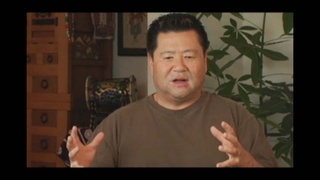Entrevistas
Animations for the Government
I made this thing, which I thought was quite brilliant. You know? Conceptually it was... the -- singers were quite popular. And it was a group of people, a uh, chorus group which sang Classical, uh, music, you know? Mozart or Beethoven or something like that. All in their voice. Their vocal tunes: sopranos, the altos, and the bass, you know. And the...so I decided to use the soprano as the, um, well I forgot. But the, uh, the legislature and the Supreme Court, well I forgot. And the uh, the alto and the bass was the government. You know with the muuh voice [deep voice]. And they sang. And the only way this government would work if they sang in harmony. And if one of them...and whenever one did one thing they could do a solo. And then they could do independently. But eventually it joins in by the second, by the alto, and then the bass would then carry it. So it became a democratic system. That's how it was. 'Cause music I, I always believed is all structured around that kind of a sound. A team. Timing, you know. So that was... that got incredibly good reviews and there was... I think it won awards all over.
And I was working on the third one, about birth control, you know. And, see what these guys would do was carry these... this, this films. In those days there was no, no tape or video so they carried a projector and these films on a mule and go into jungles in, uh, in South America. And the, then they had the uh battery driven things to, uh, run the film. And then they sit these natives down in these huts or outside and run these, these films. They explained what the government, how the government is made up. And there'd be guy who was narrating, who had this translating thing to show them how it works. Saying, geez so that's how it works. They, they picked it up and it was, it was working.
Fecha: June 29, 2012
Zona: California, US
Entrevista: Chris Komai, John Esaki
País: Watase Media Arts Center, Japanese American National Museum
Explore More Videos

El taiko es un reflejo del lugar donde vives (Inglés)
Ministro del templo Budista Senshin y co-fundaror de Taiko Kinnara.

Formando identidad mientras se toca el tradicional gagaku (Inglés)
Ministro del templo Budista Senshin y co-fundaror de Taiko Kinnara.

Taiko como auto-expresión (Inglés)
Co-fundador y director creativo de Taiko de San José

Un grupo de taiko “basado en principios” en Inglaterra creando una comunidad global de taiko (Inglés)
Co-fundador y director creativo de Taiko de San José

Defining a Taiko player
(n. 1951) Co-fundador y director administrativo de Taiko de San José.

Entre la decisión de llegar a ser un ministro o un músico (Inglés)
(n. 1949) Músico, educador y administrador de arte

Al principio, mis padres no aceptaban que yo tocara taiko (Inglés)
(n. 1949) Músico, educador y administrador de arte

El tango hizo que se quede en la Argentina
(1925-2014) Periodista de La Plata Hochi







